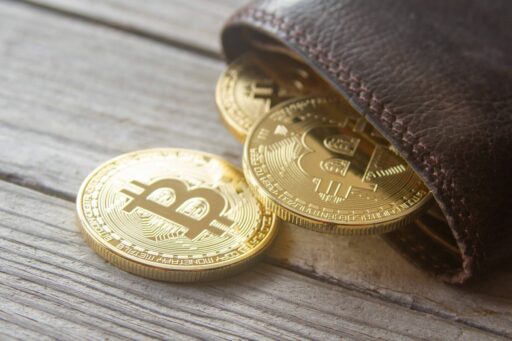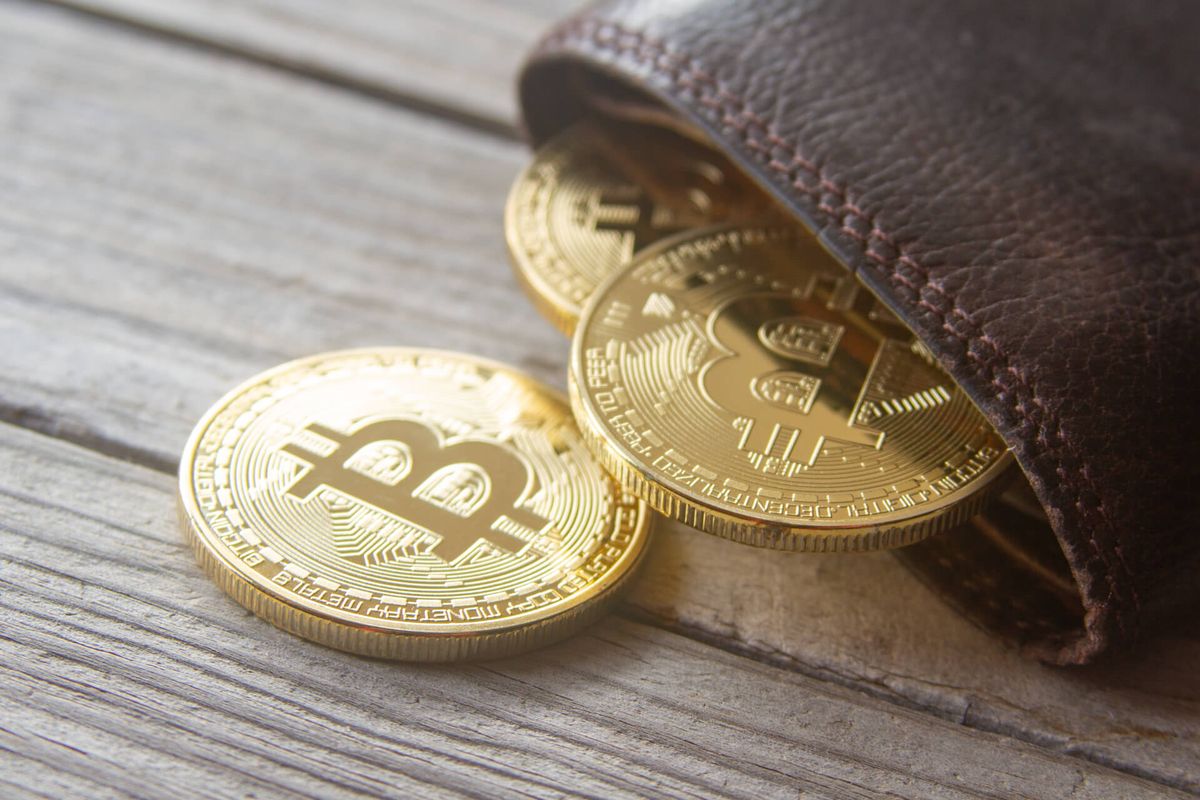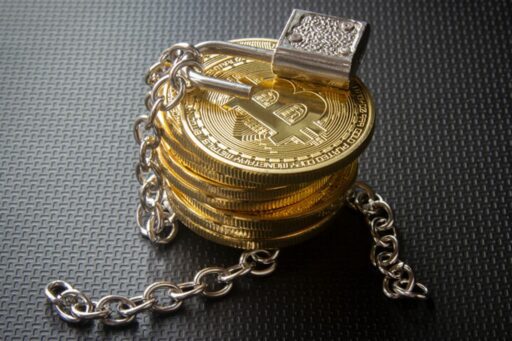As the digital currency landscape continues to expand and evolve, securing your cryptocurrency assets has never been more crucial. Hard crypto wallets, particularly hardware wallets, play an essential role in protecting your investments from online threats. This article delves into the world of hardware wallets, multi-signature solutions, preventive strategies, and the latest in decentralized wallet technology to offer a comprehensive guide on enhancing your digital asset security.
Key Takeaways
- Hardware wallets provide a high level of security for cryptocurrency holdings by storing private keys offline, with brands like Ledger and Trezor leading the market.
- Multi-signature wallets add an extra layer of security by requiring multiple keys for transactions, which can significantly reduce the risk of unauthorized access.
- Proactive measures, including the secure management of seed phrases and the establishment of recovery plans, are critical in safeguarding crypto assets against loss or theft.
- Understanding common security pitfalls and learning from past breaches are essential for crypto holders to protect their investments effectively.
- Decentralized wallets, such as those offered by SecuX, represent the future of crypto security, providing users with autonomy and resilience against attacks.
Understanding Hardware Wallets and Their Security Advantages

The Basics of Hardware Wallet Technology
Hardware wallets are physical devices designed to offer an exceptional level of security for digital assets. They store private keys offline, which significantly reduces the risk of online threats such as hacking and malware. These wallets are particularly beneficial for long-term investors who need to safeguard substantial cryptocurrency holdings.
- Offline Storage: Ensures private keys never leave the device, making them inaccessible to online attackers.
- User-Friendly Interfaces: Despite their advanced security features, hardware wallets like Ledger and Trezor are designed to be accessible to users of all levels.
- Resilience to Physical Damage: While hardware wallets are robust, they are not immune to physical damage which can lead to loss of access to assets.
It’s crucial to understand that while hardware wallets provide a strong defense against digital threats, they must be handled with care to avoid physical damage that could compromise asset accessibility.
Comparing Popular Hardware Wallet Brands
When it comes to securing digital assets, choosing the right hardware wallet brand is crucial. Ledger and Trezor are industry leaders, each with their own unique features and security measures. Ledger, known for its proprietary operating system, offers robust security but has faced criticism for not being open-source. Trezor, on the other hand, is celebrated for its user-friendly interfaces and has a strong reputation among users.
SafePal, a newer entrant in the market, has quickly gained traction by integrating with Binance and providing educational materials, although it is noted to be less beginner-friendly and has limited customer support.
It’s essential to weigh the pros and cons of each brand, considering factors such as ease of use, security features, brand reputation, and cost.
Here’s a quick comparison of some key aspects:
| Brand | Open Source | User Interface | Integration | Cost |
|---|---|---|---|---|
| Ledger | No | Advanced | Limited | Higher |
| Trezor | Yes | User-Friendly | Extensive | Moderate |
| SafePal | – | Moderate | Binance | – |
While Ledger and Trezor offer a more traditional approach to hardware wallets, SafePal’s integration with a major exchange platform like Binance presents a unique advantage. However, the learning curve and customer support are important considerations for new users.
Offline Storage: The Key to Enhanced Protection
The cornerstone of hardware wallet security lies in its ability to store digital assets offline, away from the vulnerabilities of internet-connected environments. Offline storage, also known as ‘cold storage’, is the most effective defense against online hacking attempts, ensuring that your private keys never leave the device unless you authorize a transaction.
By keeping your assets in cold storage, you significantly reduce the attack surface for potential thieves. Even in the event of physical theft, the multi-layered security protocols of hardware wallets require more than mere possession to access the funds.
To maximize the benefits of offline storage, consider the following practices:
- Regular Backups: Ensure you have multiple copies of your wallet data, including private keys and seed phrases, stored in secure and diverse locations.
- Secure Storage for Seed Phrases: Treat your seed phrase with the utmost security, as it holds the power to restore your assets.
Remember, while no security measure is infallible, offline storage provides a formidable barrier against unauthorized access, making it a critical component of your digital asset protection strategy.
The Role of Multi-Signature Wallets in Asset Protection

How Multi-Signature Wallets Work
Multi-signature wallets, commonly referred to as multi-sig, are designed to require multiple keys for transaction authorization. This mechanism significantly enhances security by necessitating the agreement of multiple parties before any funds can be moved. The use of multi-sig wallets introduces a collaborative control over assets, ensuring that no single point of failure can compromise the wallet’s contents.
To leverage multi-signature protection, it’s crucial to understand the setup process:
- Determine the required number of signatures (e.g., 2-of-3, 3-of-5, etc.)
- Distribute the keys among trusted parties
- Establish clear protocols for transaction approval
By requiring multiple keys, multi-sig wallets provide a robust defense against unauthorized access and single key losses. It’s essential to combine this with a comprehensive backup plan to safeguard digital assets effectively.
Remember to follow the necessary steps to set up your multi-sig wallet and create a strong backup strategy. This will ensure that your digital assets remain secure, even in the event of a keyholder’s absence or a security breach.
Implementing Multi-Sig for Increased Security
The implementation of multi-signature (multi-sig) wallets is a critical step in enhancing the security of digital assets. Multi-sig wallets require multiple private keys to authorize a transaction, which not only makes unauthorized access more difficult but also provides a safety net in case one key is compromised or lost.
To effectively implement a multi-sig wallet, consider the following steps:
- Determine the required number of signatures (keys) for transactions.
- Select trusted individuals or devices to hold these keys.
- Establish clear protocols for key usage and transaction authorization.
By requiring multiple private keys, multi-sig wallets create a robust security environment that is resilient to a variety of threats, including phishing scams and unauthorized access attempts.
It is also essential to educate all key holders about the risks of phishing scams and the importance of vigilance. Regular updates to wallet software and enabling two-factor authentication (2FA) can further reinforce security measures.
Case Studies: Successful Multi-Sig Implementations
The adoption of multi-signature (multi-sig) wallets has proven to be a game-changer in the realm of digital asset security. By requiring multiple keys to authorize a transaction, these wallets significantly reduce the risk of unauthorized access and asset theft. The implementation of multi-sig wallets has been pivotal for both individual investors and institutions, ensuring an extra layer of security.
One notable example is a scenario where a damaged hardware wallet could have resulted in the loss of funds. However, thanks to the multi-sig setup, the assets were recoverable because other authorized signatories were able to approve the necessary transactions to transfer the assets to a new, secure wallet.
While no system is impervious to threats, multi-sig wallets offer a robust defense mechanism against a variety of attack vectors, including the increasingly sophisticated phishing scams that target crypto holders.
For those holding significant investments in cryptocurrency, combining the use of hardware wallets with multi-sig configurations is highly recommended. This approach not only keeps private keys offline but also ensures that a single point of failure does not compromise the entire wallet.
Preventive Strategies to Safeguard Your Crypto Assets

Secure Management of Seed Phrases
The integrity of your seed phrase is paramount to the security of your digital assets. Treat your seed phrase with the same level of security as the assets it protects. Regularly back up your wallet data, including private keys and seed phrases, and store these backups in diverse, secure locations. Consider using tamper-evident bags, fireproof safes, or metal seed storage devices for physical copies.
For an added layer of security, divide the phrase between two secure locations or use a metal seed storage device to guard against physical damage.
Here are some best practices for seed phrase management:
- Use tamper-evident bags or fireproof safes for physical copies of your seed phrase.
- Create multiple copies of your wallet data, including private keys and seed phrases.
- Store backups in secure locations such as safe deposit boxes, with trusted family members, or in personal safes.
- For digital backups, consider encrypted storage solutions that require a password for access.
Remember, the loss of a seed phrase can mean the irreversible loss of your assets. Implementing these strategies will help ensure that your digital wealth remains accessible and safe from unauthorized access.
Best Practices for Using Hardware Wallets
When it comes to securing your digital assets, hardware wallets are a cornerstone of a robust security strategy. Always ensure that your wallet’s firmware is up to date to benefit from the latest security enhancements and vulnerability patches. Regular updates can prevent potential exploits that target outdated software.
- Backup Your Wallet: Securely back up your wallet’s recovery phrase or seed phrase. This set of words is your last line of defense in case your hardware wallet is lost, stolen, or damaged.
- Verify Transactions: Carefully check transaction details on the wallet’s screen before confirming. This step is crucial to avoid falling victim to phishing or address-switching malware.
- Keep it Offline: Only connect your hardware wallet to your computer when necessary. The less exposure it has to potential online threats, the safer your assets are.
It’s essential to treat your hardware wallet as you would any valuable item. Keep it in a safe, private place and be mindful of who has access to it. Physical security is just as important as digital security in protecting your assets.
Recovery Plans: Preparing for the Worst-Case Scenario
When it comes to recovering lost crypto assets, the landscape is fraught with complexity. Each method of recovery has its own challenges and varying success rates. It’s essential to evaluate the situation carefully, weighing the value of the assets against the potential costs of recovery efforts.
By incorporating preemptive measures into your cryptocurrency management routine, you significantly enhance the security of your digital assets.
Professional recovery services can be a beacon of hope, offering specialized tools and expertise that may be beyond the reach of individual efforts. Here’s a brief overview of when to consider such services:
- Complex Situations and High-Value Wallets: For high-value wallets or complex loss scenarios, professional services offer a better chance of success.
- Risk of Data Loss: If DIY methods pose a significant risk of permanent data loss, it’s prudent to consult professionals.
Ultimately, the decision to engage a professional service should be informed by a thorough evaluation of the specific circumstances. While it’s impossible to eliminate all risks, informed and careful steps can greatly reduce your vulnerability, providing peace of mind in the dynamic world of crypto.
Navigating Common Pitfalls in Digital Asset Security

Analyzing Frequent Causes of Asset Loss
The digital landscape of cryptocurrency storage is fraught with pitfalls that can lead to the loss or inaccessibility of wallets. Understanding these common causes is the first step towards prevention and prepared recovery efforts. The reasons for loss span a range from human error to malicious attacks, each presenting unique challenges in the quest to regain access to lost assets.
- User Error: The most frequent cause of wallet loss involves mistakes made by the wallet owners themselves.
- Malicious Attacks: Hackers and scammers employ various tactics to gain unauthorized access to wallets.
- Technical Failures: Hardware malfunctions or software bugs can render wallets inaccessible.
- Lost Credentials: Forgetting passwords or misplacing physical backup devices can result in asset loss.
Each of these methods comes with its own set of challenges, risks, and success rates. It’s crucial to carefully assess the situation, considering the value of the lost assets and the potential cost of recovery efforts. In many cases, consulting with or hiring a professional recovery service can significantly increase the chances of success.
Learning from Past Security Breaches
The rise of digital currencies has paralleled an increase in cybercriminal activities targeting these assets. Phishing attacks, hacking incidents, and malware are some of the most prevalent threats that have led to significant losses. Understanding these threats is essential for implementing effective security measures.
- Phishing Attacks: Trick users into revealing private keys or seed phrases.
- Hacking Incidents: Unauthorized access to wallets or platforms, leading to theft.
- Malware: Infiltrates systems to steal data or redirect transactions.
In addition to these direct threats, issues such as forgotten passwords and lost seed phrases underscore the importance of diligent key management and security. Mismanaged backups further exacerbate the risk, emphasizing the need for secure and redundant storage solutions.
The evolving landscape of digital wallet security, with advancements in encryption and biometric data, adds layers of protection. Educating oneself and adopting a proactive stance are essential.
Case studies of past breaches serve as a stark reminder of the consequences of inadequate security. By analyzing these incidents, crypto holders can learn valuable lessons and choose wallets wisely to safeguard their investments.
Educational Resources for Crypto Holders
In the rapidly evolving world of cryptocurrency, staying informed is crucial. Educational resources play a vital role in empowering users to secure their digital assets effectively. A balance between security and accessibility is essential, as highlighted in a comprehensive guide to securing digital currencies with crypto wallets. This guide covers types, features, private key management, secure wallet selection, acquiring cryptocurrencies, and advanced security tactics.
The crypto industry’s maturity demands a proactive approach to asset protection. Engaging with community forums, staying abreast of the latest security trends, and educating oneself about security options are indispensable.
For those seeking to deepen their understanding, here’s a curated list of topics that are invaluable:
- Store Your Cryptocurrency Safely and Correctly
- Decentralization in Blockchain and Crypto
- Multi-Signature Wallets – Are They Right for You?
- The Importance of Diversifying Your Crypto Portfolio
- Understanding Crypto On-Ramps and Off-Ramps
Each topic offers insights into the nuances of crypto security and investment strategies, ensuring that crypto holders are well-equipped to navigate the complexities of the digital asset landscape.
Embracing Decentralized Wallets for Future-Proof Security

Decentralization as a Security Feature
The very essence of a decentralized wallet is its security feature. Decentralized wallets decentralize the risk, ensuring your funds remain safe and secure, a stark contrast to the centralized models where funds are often pooled and more exposed.
Decentralized wallets offer enhanced security and autonomy. Your assets are directly under your control, reducing the risk of breaches associated with third-party control. This autonomy is a cornerstone of the cryptocurrency philosophy, stressing the importance of decentralization, security, and personal control.
Decentralized wallets represent not just a technological advancement but a shift towards financial empowerment and inclusion.
The advantages of decentralized wallets are particularly evident in regions with stringent financial controls or unstable economic environments, providing a means to navigate the economic landscape with greater autonomy and security.
Benefits of Decentralized Wallets:
- Enhanced Security: Elimination of single points of failure and reduced hacking vulnerabilities.
- Complete Control: Users hold their private keys, offering direct control over funds.
- Financial Empowerment: They facilitate financial inclusion and empowerment in challenging economic climates.
Transitioning to Decentralized Wallets
The shift towards decentralized wallets is not just a technological upgrade but a move towards financial self-sovereignty. These wallets offer unparalleled security and privacy, as they operate without a central authority, ensuring that you have full control over your assets. This autonomy is particularly beneficial in regions with strict financial controls or unstable economies, providing a means for financial empowerment and inclusion.
Decentralized wallets align with the core principles of cryptocurrency, offering enhanced security and privacy.
Understanding and adopting decentralized wallets are pivotal steps in securing your crypto assets. Their advantages in terms of security, autonomy, and global accessibility make them an essential tool for anyone looking to safeguard their digital wealth. Here’s a simple guide to help you make the transition:
- Familiarize yourself with the concept of decentralized wallets and how they differ from centralized ones.
- Choose a decentralized wallet that fits your needs, considering factors like security features, user interface, and compatibility with different cryptocurrencies.
- Transfer your assets from any centralized platforms or wallets to your new decentralized wallet.
- Regularly update your wallet software and practice secure backup procedures to protect your assets.
SecuX: A Case Study in Decentralized Wallet Solutions
SecuX represents a significant stride in the realm of decentralized wallet solutions, offering users a blend of security, autonomy, and global accessibility. Embracing the future of crypto security is not just a concept but a practical reality with SecuX’s range of products.
The shift towards decentralized financial empowerment is evident in the growing popularity of products like the SecuX V20, W20, and W10. These devices ensure that users retain full control over their digital assets, a fundamental principle of decentralized security.
For those ready to secure their crypto assets, SecuX provides a straightforward process:
- Select a compatible SecuX wallet.
- Follow the setup instructions carefully to generate secure private keys and create a backup.
This methodical approach to using a decentralized wallet like SecuX underscores the importance of user participation in the security process. By taking these steps, individuals can significantly mitigate the risks associated with digital asset storage and management.
Securing Your Digital Future
In conclusion, the journey through the world of hard crypto wallets underscores the critical importance of securing digital assets in an ever-evolving landscape. As we’ve explored, hardware wallets like Ledger and Trezor provide robust security measures, keeping private keys offline and out of reach from online threats. The integration of advanced encryption and biometric data further fortifies these devices, making them indispensable for anyone serious about cryptocurrency investment. It’s imperative to stay informed, engage with the community, and take proactive steps to safeguard your investments. Remember, the key to maintaining the security of your digital assets lies in understanding the technology, implementing best practices, and being prepared for any eventuality. Embrace the future of crypto security with confidence, knowing that tools like SecuX offer decentralized solutions that put you in control of your financial destiny.
Frequently Asked Questions
What are hardware wallets and how do they enhance security?
Hardware wallets are physical devices that store private keys offline, providing robust security by minimizing exposure to online threats. They are ideal for long-term investors and are known for their resilience against hacking, as they prevent private keys from being exposed on internet-connected devices.
What is a multi-signature wallet and why is it more secure?
A multi-signature (multi-sig) wallet requires multiple keys to authorize a transaction, which enhances security by distributing the power to approve transactions among several parties. This setup prevents a single point of failure and makes it harder for unauthorized users to access funds.
How should I manage and store my seed phrase securely?
Your seed phrase should be treated with utmost security. Store it in tamper-evident bags or fireproof safes, and consider dividing it between two secure locations. For added durability against physical damage, use a metal seed storage device.
What are the common reasons for loss of crypto assets?
Common reasons for loss include hacking, exposure of private keys, user error, forgotten passwords, and physical damage to storage devices. Understanding these risks and adopting diligent security practices can help prevent asset loss.
How do decentralized wallets provide a higher level of security?
Decentralized wallets offer enhanced security by giving users complete control over their private keys, reducing the risk of single points of failure and decreasing susceptibility to centralized system breaches. Users are responsible for their wallet’s security, making it less vulnerable to external attacks.
What is SecuX, and how does it relate to decentralized wallet solutions?
SecuX is a brand that offers decentralized wallet solutions for cryptocurrencies. Their cold wallets operate in a decentralized manner, ensuring users retain full control over their digital assets and providing a secure way to manage and store cryptocurrencies.





